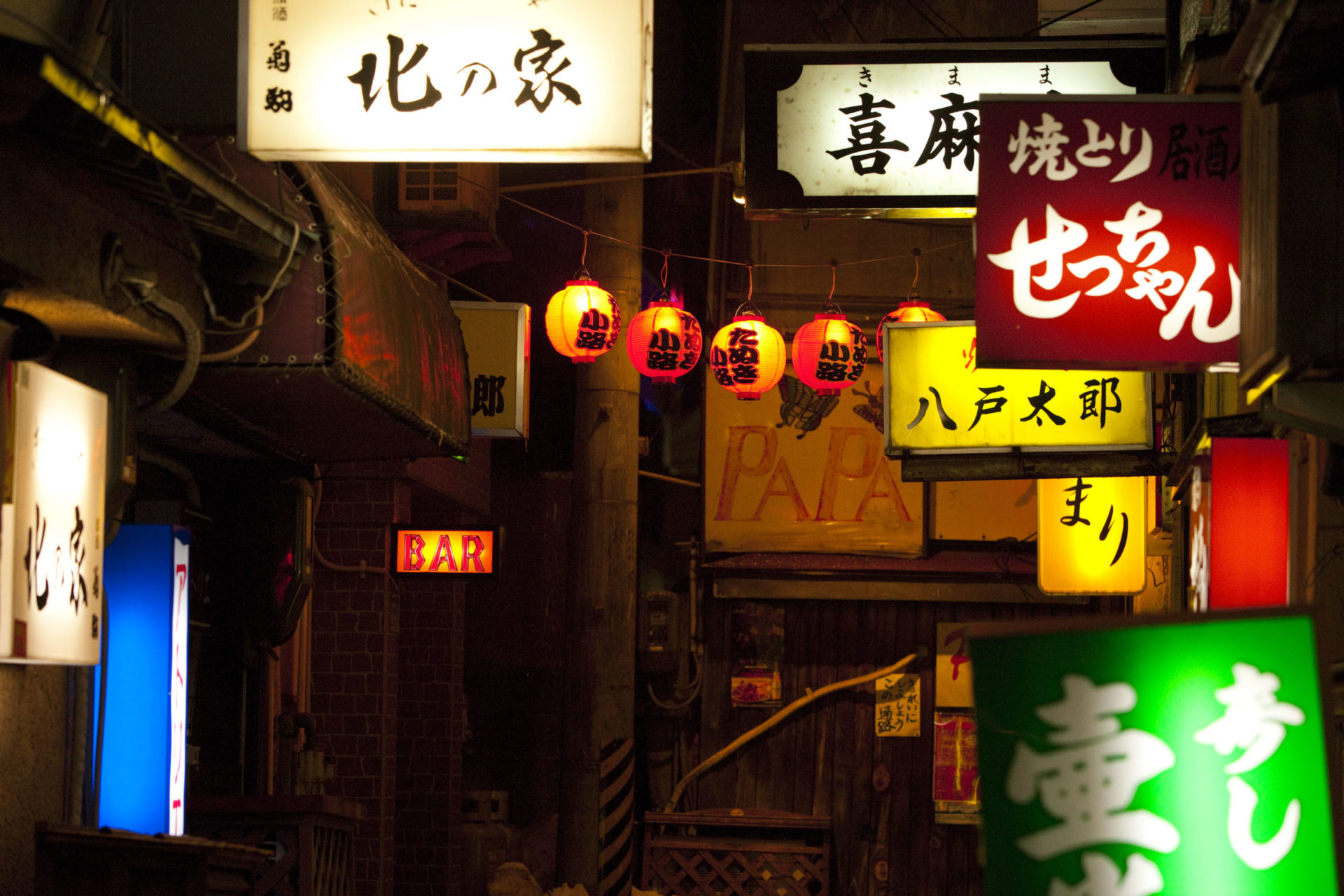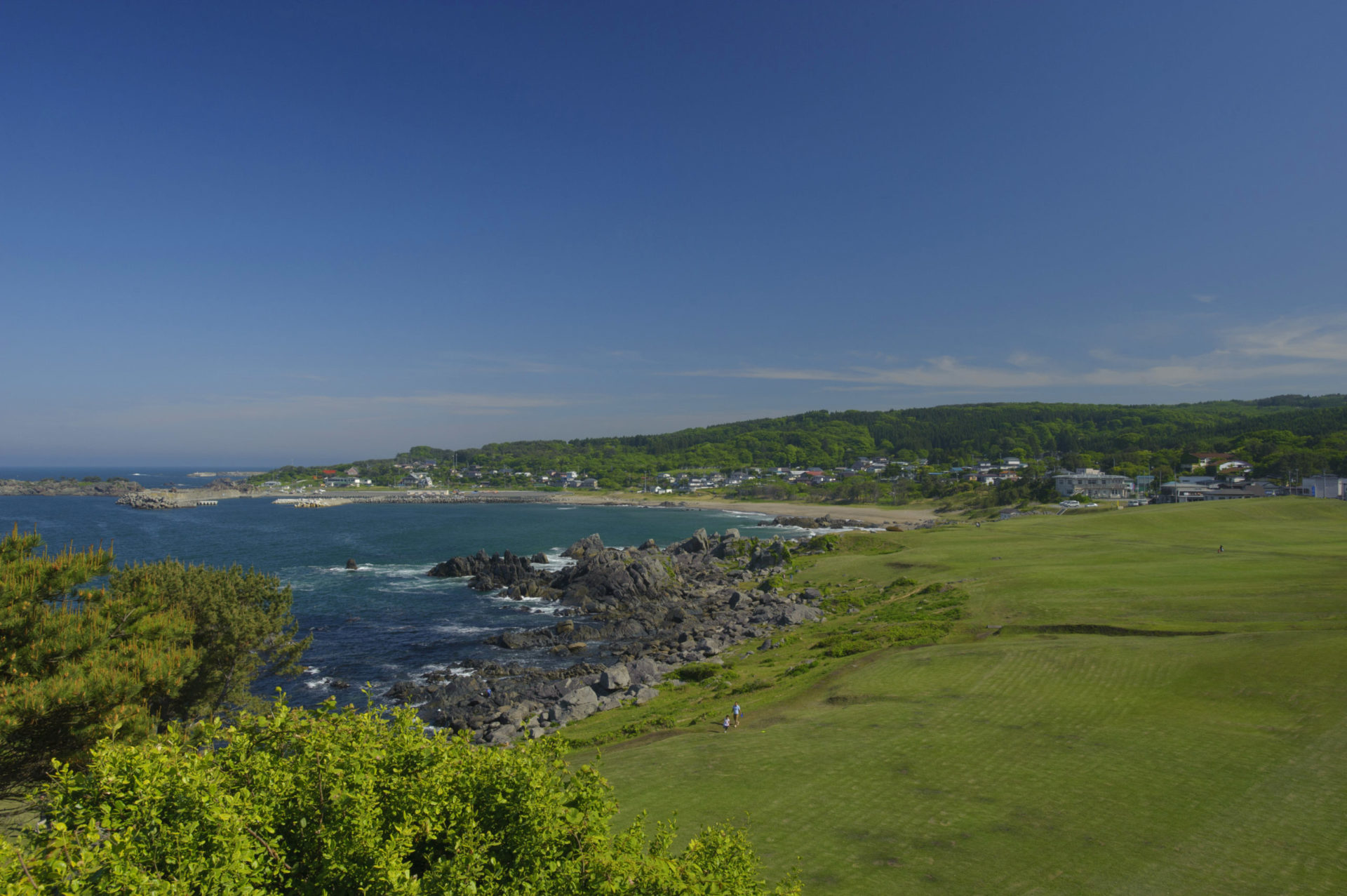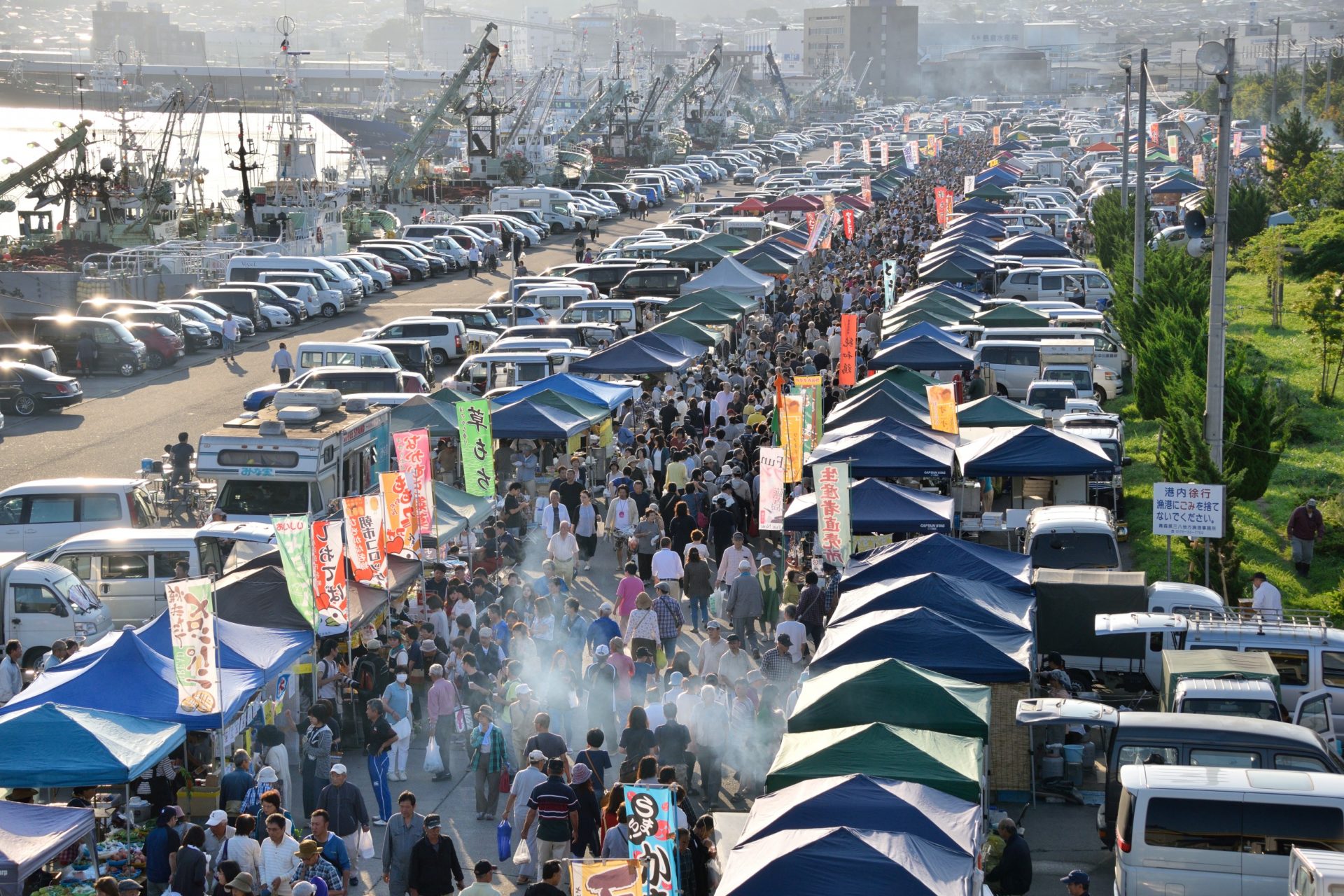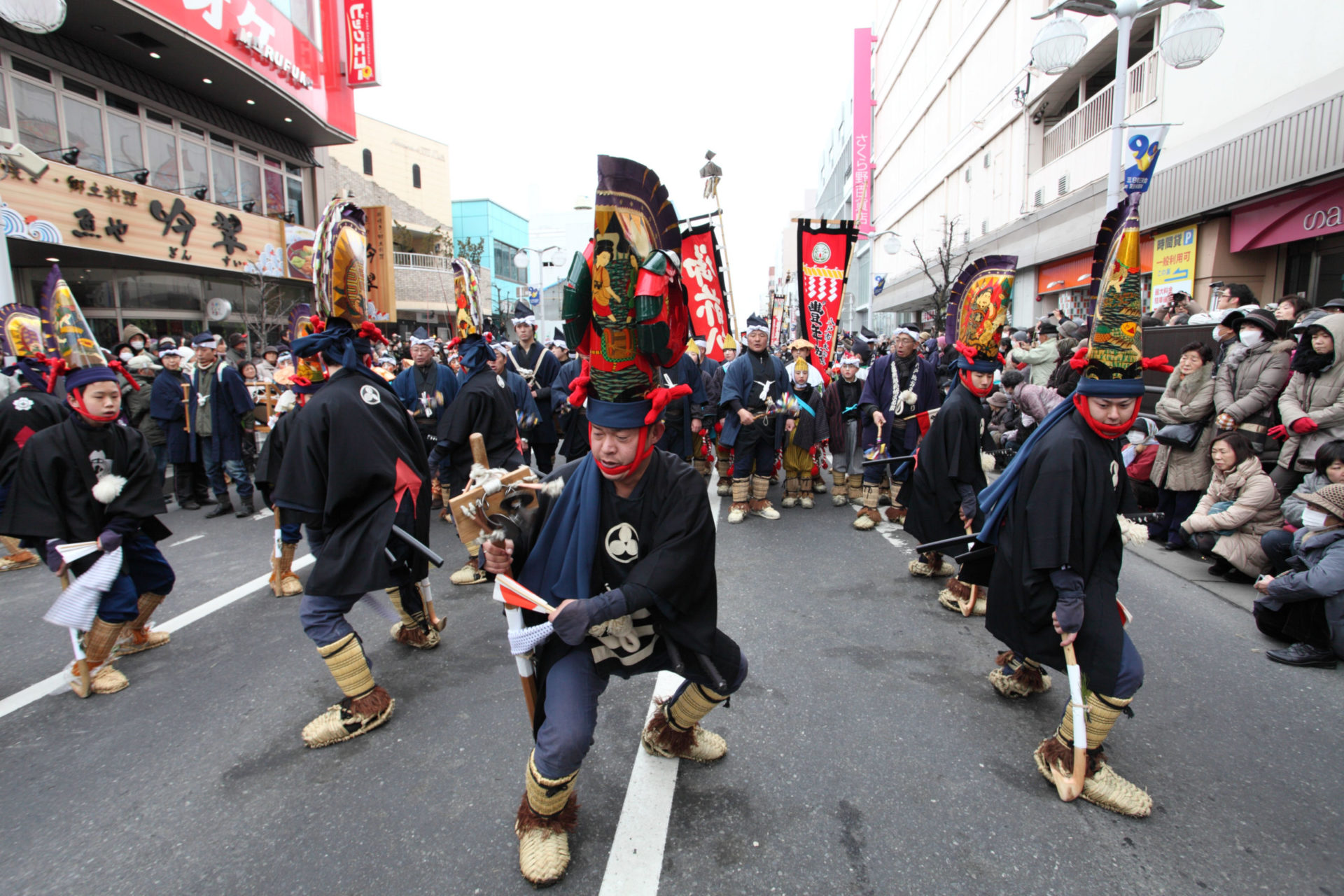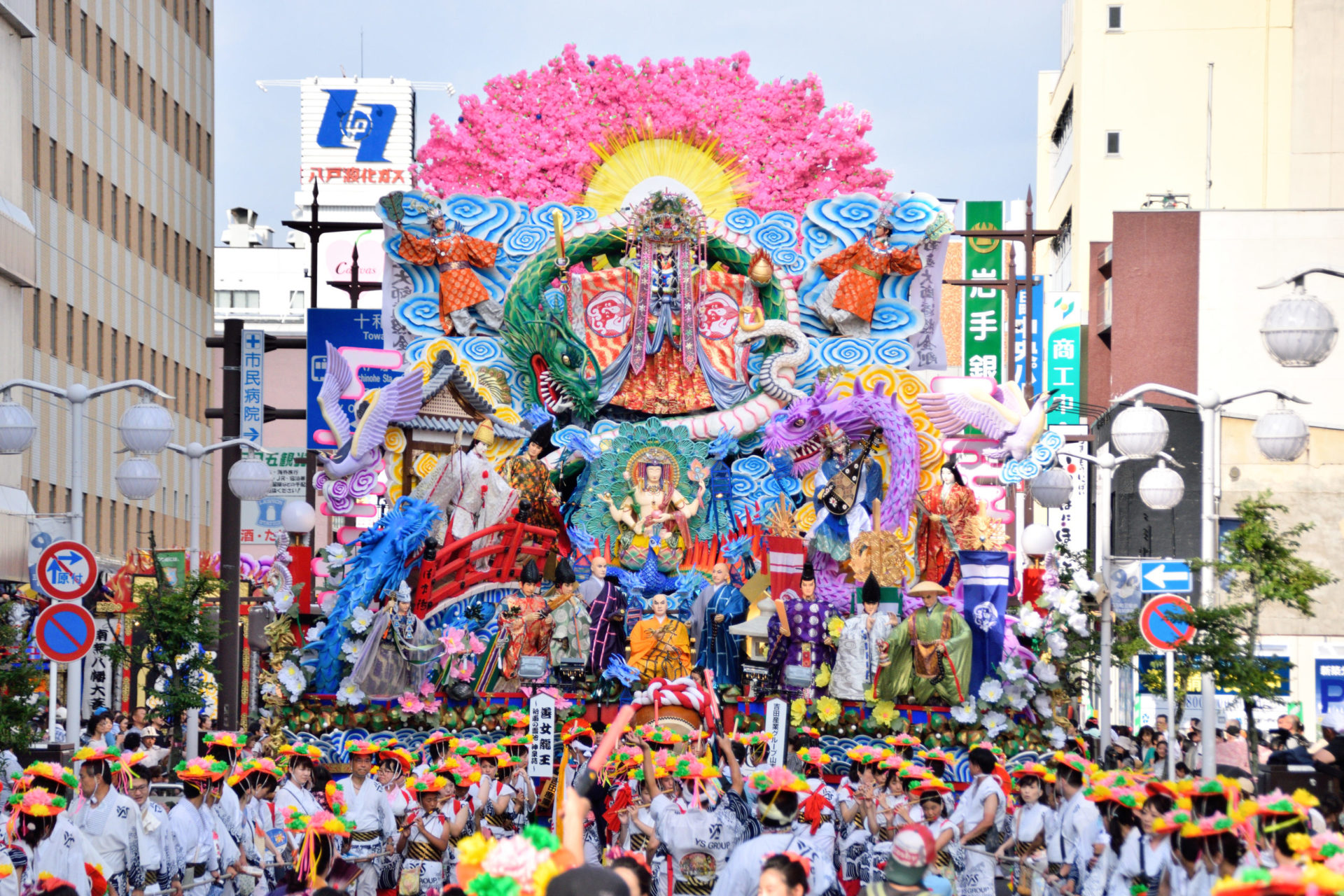AREA
Hachinohe is a city of dual natures: a port town and an urban city district.
Hachinohe-city is one of the biggest fishery cities in Japan by catch volume. It is also one of the most prominent industrial cities in northeastern Tohoku. Hachinohe has many unique and interesting places to visit. In the central part of the city is a gourmet district where you can enjoy good food and sake. In suburban areas, there is the Tanesashi Coast in the Sanriku Fukko National Park known for its wilderness, and the Tatehana Wharf Morning Market, one of the biggest morning markets in Japan.
Hachinohe is also known as the birthplace of the B-1 Grand Prix, a festival of cheap yet tasty local food (so-called B-grade gourmet). Here you can enjoy one of the most well known local dishes, Hachinohe Senbei Jiru. In the central part of the town, there are many gathering places and venues such as the Hachinohe Portal Museum (nicknamed Hacchi) and Hachinohe-city Museum, which has been reimagined and reopened recently. In July 2021, the Jomon Prehistoric Sites in Northern Tohoku and Hokkaido, which include the Korekawa Site from the Stone Age, was designated as a World Heritage Site, and has since gotten a lot of attention.
The city has two National Important Intangible Folk Cultural Assets.
In summer, the city celebrates Hachinohe Sansha Taisai, which has been designated as an UNESCO Intangible Cultural Heritage. In winter, the locals pray for a good harvest with a folk performance called Hachinohe Enburi. Both have been designated as National Important Intangible Folk Cultural Assets.
At the center of the Hachinohe Sansha Taisai is a mikoshi parade of three Shinto shrines, Ogami Shrine, Chojasanshinra Shrine and Shinmeigu, together with 27 floats. Isseihauchi, performed by Shishigashira of Kagura, is known for being particularly dynamic. Watching the gorgeously decorated floats and elaborate stagecraft, such as seriagari (the trap door), is truly entertaining.
Hachinohe Enburi is a folk performing art that has been performed for generations in five cities and towns of the region, including Hachinohe. It is known for its glittering Eboshi headgear, which shines in the snowy landscape, and the lyrical sound of tehirakane, which resonates crisply in the clear air. The climax of the festival is called Issei-Zuri, a parade of more than thirty Enburi groups, which takes place in the central shopping district after an early-morning Shinto shrine ceremony. The spectators enjoy the diversity of the Zuri dances that have been uniquely developed by each group.
Geinoh List
三陸国際芸術推進委員会のサイトに遷移します
Geinoh ListProgram
イベント
-
Sanriku Geinoh Discovery Summit October 7 (Sat.) – 8 (Sun.), 2023
-
【Official Tour/End of application】”FULL EXPERIENCE of SANRIKU-OFUNATO with SANRIKU INTERNATIONAL ARTS FESTIVAL”
-
Sanriku International Art Festival 2023 September 2023→March 2024
-
Suggested Route | A Trip to Meet the Young Geinoh Practitioners 3Days and 2Nights Sep.9th(Fri)-11th(Sun)
-
Suggested Route | Trip to Meet the Young Geinoh Practitioners 2Days and 1Night Sep.10th(Sat)-11th(Sun),2022
-
Sanriku Geinoh Festival LINK September,2022-March,2023
-
Sanriku Kagaribi Bonfire Festival Sep.24th,2022
-
Theater Project Hachinohe
-
Hachinohe Enburi (Hachinohe City)
-
Kushihiki Hachimangu Autumn Festival(Hachinohecity)
-
Local Festival Held During Obon Season (Hachinohe City)
コンテンツ
-
TOHOKU revival: passion mission action [long version]
-
SANRIKU INTERNATIONAL ARTS FESTIVAL MODEL TOUR REPORT
-
Sanriku Kagaribi Bonfire Festival
-
Sanriku International Arts Festival 2022 REVIVE
-
Sanriku International Arts Festival Vertical “Coloring the Railroad” Sanriku by Three Photographers -Ishikawa Naoki Edition
-
Kaminagahime (Princess of Long Tresses)
文化施設
-
Hachinohe City Museum
Hachinohe City Museum, dedicated to “Reviving History and Opening up the Future,” has four exhibition halls that systematically provide history of the city with archeological, historical, folk culture and intangible culture exhibitions. The museum also holds various special exhibitions and family oriented participatory events (Museum Club) among others.。
Address| Higashigamae 35-1 Nejō, Hachinohe, Aomori 039-1166, Japan
Phone| +81 (0)178-44-8111 -
Nejo Castle Historic Site
Nejo Castle was built in 1334, the first year of the Kenmu era, by General Nanbu Moroyuki of Nancho during the Nanbokucho period and was the symbolic center of Hachinohe region for about 300 years. This castle consists of eight fortifications including Honmaru, Nakatate and Tozenjikan. It was opened as a public park in the year Heisei 6 (1994), after an eleven-year archeological excavation and study. The reconstruction of many structures including the main hall, the craft shop, the barn and the stable is faithful to the originals, providing a vestige of the past.
Address| Nejō-47 Nejō, Ōaza Hachinohe, Aomori 039-1166, Japan
Phone| +81 (0)178-44-8111 (Museum); +81 (0)178-41-1726 (Main Office) -
Hachinohe City Nango Museum of History and Folklore
This museum, whose central theme is the Showa era, exhibits items related to the Second World War as well as post-war appliances such as television sets and washing machines to show the changing lives of Showa. It also exhibits a blue-eyed doll called Merry-chan of Shimamori Elementary School. Right next to the museum building, there is an old house built in Meiji era. This house, currently open to the public, was relocated from Yomasari district, which was submerged when a dam was built.
Address| Koyamada-7-1 Nangō Ōaza Shimamori, Hachinohe, Aomori 031-0202, Japan
Phone| +81 (0)178-83-2443 -
Korekawa Jōmon Museum
This museum features exhibitions based on the discoveries from the archaeological excavations in Hachinohe and engages in various workshops and activities. Its mission is to educate the public on the Jōmon culture of the Tohoku region and the importance of preserving buried cultural property. The permanent collection includes a clay figure of a praying person, “Gassho Dogu” excavated in Kazahari Ruins 1, and various vividly colored lacquerware, highly crafted earthenware, and clay figures excavated at Korekawa Stone Age ruins, which were designated as a World Heritage Site in July 2021.
Address| Yokoyama-1 Korekawa,Ōaza, Hachinohe, Aomori 031-0023, Japan
Phone| +81 (0)178-38-9511 -
Hachinohe City Culture Center Nanbu Kaikan Hall
Built in 1985, Nanbu Kaikan is a public cultural venue in a Japanese style building, with a large tatami room with 144 tatami mats (approximately 263 square meters) and a stage, among other facilities. It is available for various activities including dance performances, tea ceremonies and art exhibitions. Hachinohe Castle Kakugoden Omotemon, lovingly referred to as just “Omotemon (Front Gate)” by the people, was built in 1797 and designated as a Prefectural Treasure in 1981.
This gate, structured in the “Munamon” form, is one of the largest in Japan.
Address| 3-chōme, 3-6 Uchimaru, Hachinohe, Aomori 031-0075, Japan
Phone| +81 (0)178-43-9202 (Nanbu Kaikan), +81 (0)178-43-9156 (Cultural Creation & Promotion Office) -
Hachinohe City Kojokaku
Kojokaku was built as the private mansion of the Izumiyama family, known as the greatest tycoons in the Tohoku region. It is a Japanese stylehouse from the Meiji era, incorporated with styles of temple and shrine architecture. The garden is known for its pristine atmosphere surrounded by trees, including a pine tree known as Garyu-No-Matsu, which is more than 100 years old. The mansion was designated as a Tangible Cultural Property by the national government in 2003 for its superior modern Japanese architectural style. It is available year-round for various cultural activities.
Address| 5-4 Motokachishichō, Ōaza, Hachinohe, Aomori 031-0052, Japan
Phone| +81 (0)178-22-2260 (Kojokaku), +81 (0)178-43-9156 (Management Office)https://www.city.hachinohe.aomori.jp/soshikikarasagasu/bunka/bunka/03/6454.html
Facility
VISIT HACHINOHE
https://visithachinohe.com
